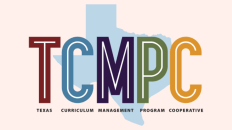Group work and the science classroom go together like peanut butter and jelly – or like hydrogen and oxygen. Whether it’s a lab, discussion, research, stations, partners, or interventions, there are many opportunities for science teachers to employ flexible grouping in their classrooms.
What is flexible grouping
Flexible grouping or flexible groups is a strategy in education that highlights differentiation. It’s a data-driven approach to group work or grouping in a classroom that includes small groups of mixed, same ability, pairs, whole-class, and individual instruction.
Within flexible grouping arrangements, students can work collaboratively or independently, and groups may be teacher or student-led. Teachers choose which grouping format to use based on lesson goals as well as student skills, prior knowledge, and interest.
Flexible grouping gives students opportunities to interact with peers in meaningful ways while meeting important learning goals. Flexible grouping is beneficial for:
- Differentiating instruction
- Encouraging in-depth academic discussions
- Facilitating collaborative student interactions
- Promoting on-task behaviors
Why is flexible grouping important?
Flexible grouping helps teachers identify student needs and work on those specific needs. It’s one of those rare things in education that allow students to get what they need exactly when they need it. When students’ needs are met on an individual level, they become more motivated learners.
Ways to incorporate flexible grouping
One great way to incorporate flexible grouping into your classroom is through cooperative learning groups. There are as many ways to structure cooperative learning groups as there are stars in the sky (well, maybe not that many).
Numbered Heads Together
Numbered Heads Together is a cooperative learning strategy developed by Dr. Spencer Kagan. In this strategy each student is held accountable for learning the material. Students are placed in groups and each person is given a number. The teacher poses a question and students “put their heads together” to figure out the answer.
The teacher calls a specific number to respond as spokesperson for the group. By having students work together in a group, this strategy ensures that each member knows the answer to problems or questions asked by the teacher.
Jigsaw
Another cooperative learning strategy is called Jigsaw. Jigsaw was originally developed by Elliot Aronson. The purpose of the strategy is to create an environment where students need to work together to successfully comprehend an article or text.
There are three steps to Jigsaw. In the first step each student is assigned a section of the article to read. Students read their section and then meet with other students who read the same section (this is called the expert group). When students meet with the expert group they discuss the section of the article they read and decide what information is important to share with others. It can be helpful to provide discussion question prompts, such as “One important point in this section is ___ because ___.”
After meeting with their expert group, students move to home groups. In the home group students teach the others by summarizing and sharing important information from the section of the article they read. Students who didn’t read the section can ask clarifying questions. Again, it is helpful to provide discussion question prompts, such as “In this part of the article, the author’s main point is ___.”
The final step of Jigsaw is often left out, but may be the most important step. After meeting with home groups, students go back to the expert group to discuss how their section fits within the entire article. This discussion allows students an opportunity to synthesize their learning and helps them come to a deeper understanding of the article.
One Final Tip
Remember, structure is key. Simply placing students into groups does not guarantee high engagement or academic success. Unstructured small groups do not function well. Students tend to be off-task more often, become disruptive, and seldom reach instructional goals. Well-formed groups and clear, practiced procedures are necessary to maximize academic productivity and enhance personal relationships.
Learn more about flexible grouping with our online course, flexible groups and partnerships.
Gretchen Kehrberg was formerly a Special Education Specialist at Region 13. In addition to her experience at the Education Service Center Region 13, she had ten years of teaching experience. Gretchen is passionate about education and working with teachers to create inclusive learning environments where all students have the opportunity to grow academically, socially, and emotionally.






Add comment